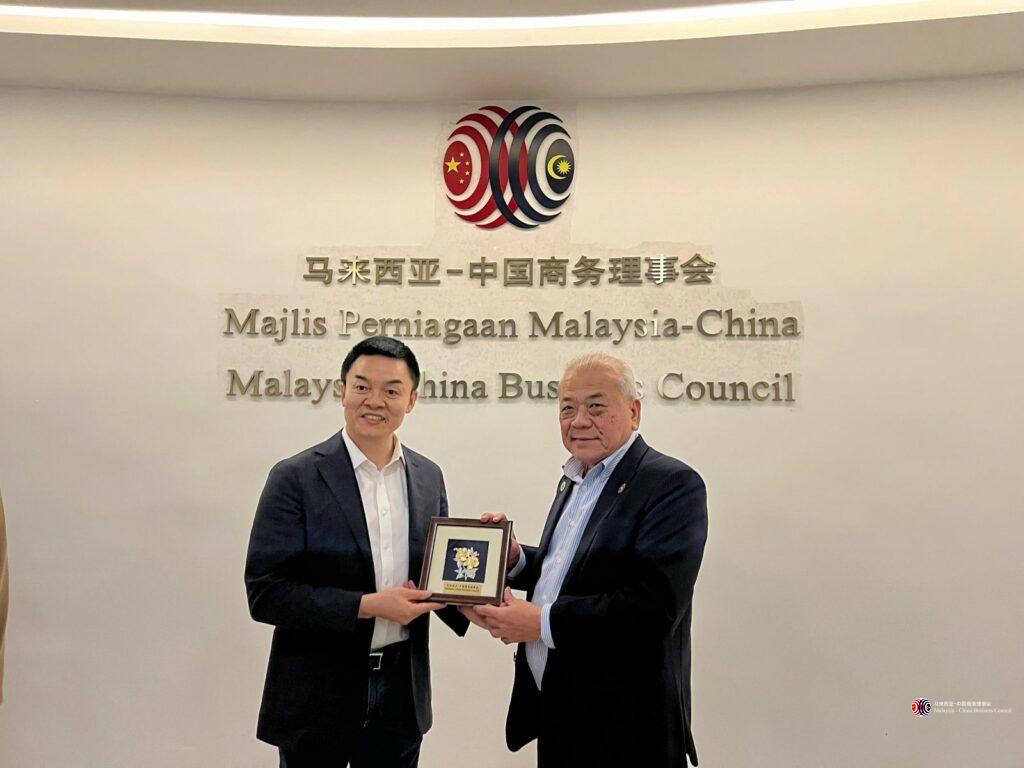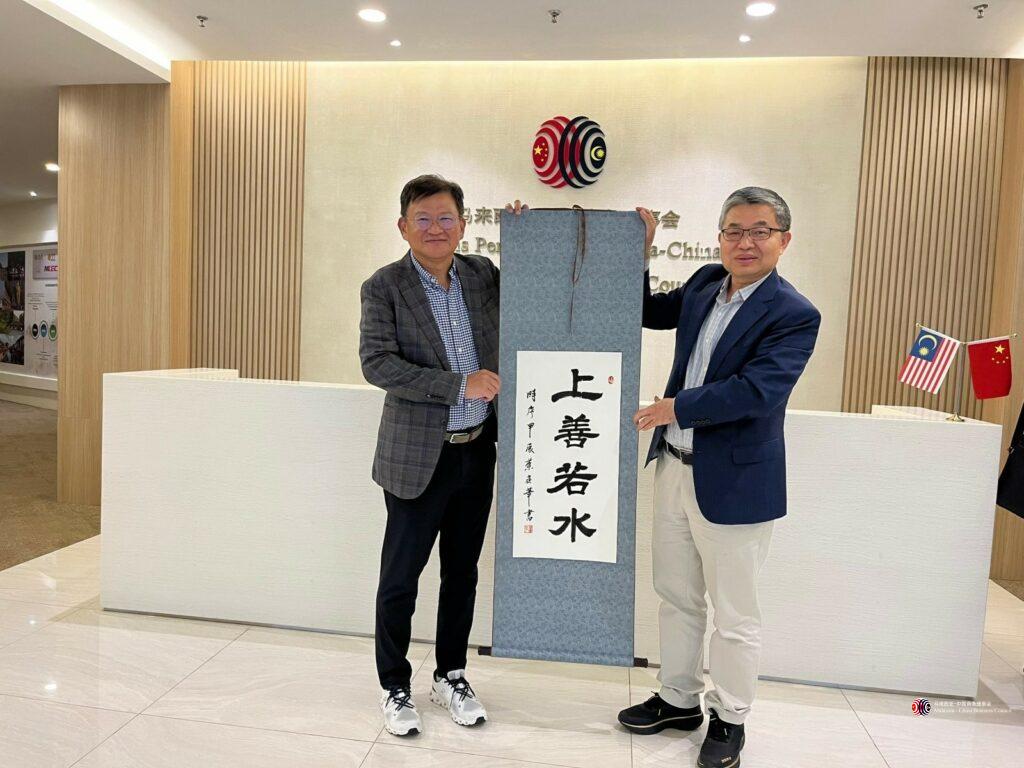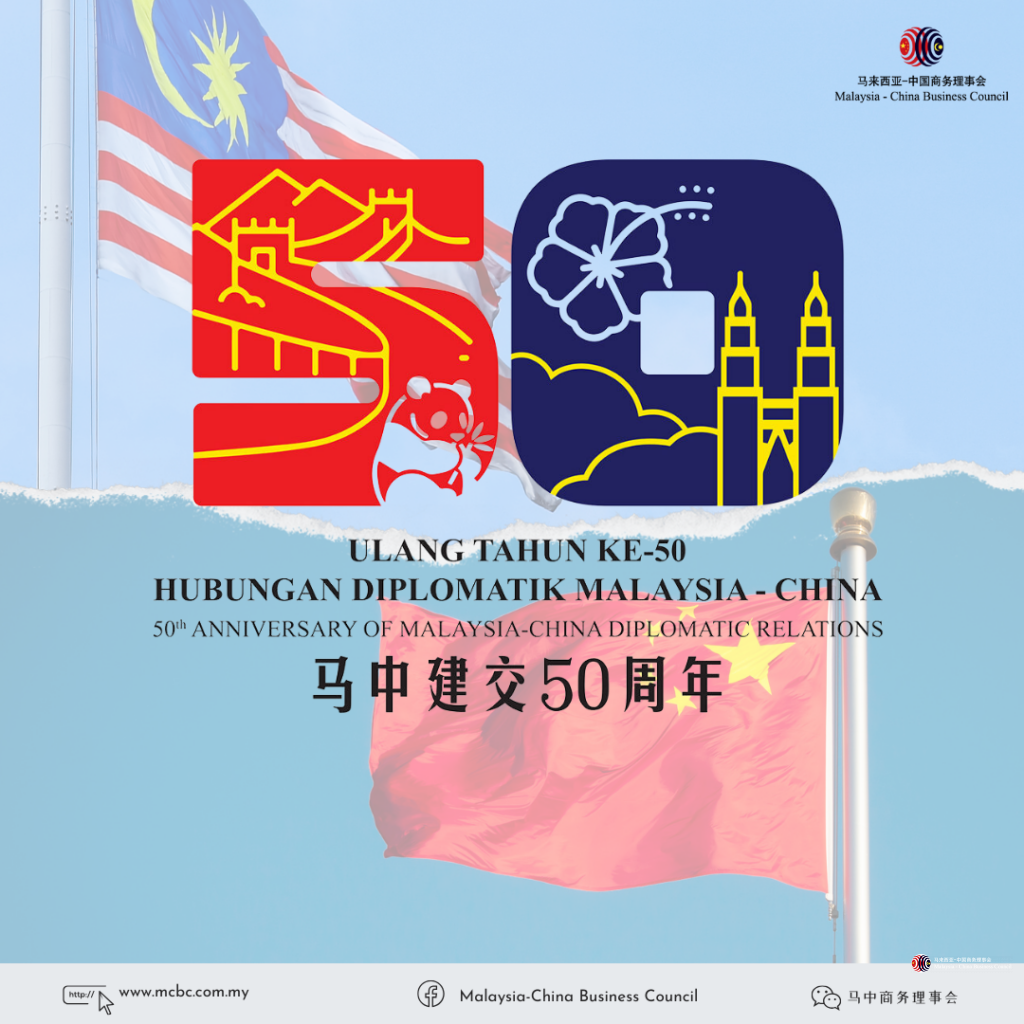China-Malaysia Qinzhou Industrial Park (QIP) Progress Report
The Prime Ministers of China and Malaysia witnessed the signing of a Memorandum of Understanding (MOU) by the Malaysian International Trade and Industry Minister Dato’ Sri Mustapa Mohamed and the Chinese Minister of Commerce Mr. Chen Deming at the 8th China-Asean Expo (CAEXPO 2011) to jointly develop the proposed China-Malaysia Qinzhou Industrial Park (QIP) which is the first joint venture project undertaken by the Chinese and Malaysian governments. The park is to play a pivotal and leading role not only in forging a closer cooperation between private enterprises of the two countries, but also giving a new meaning to bilateral economic ties and providing a new platform for both China and Malaysia in our effort to spearhead greater regional and international economic cooperation.
1. THE MASTER PLAN
According to the master plan drawn up by the planning authorities entrusted by Qinzhou Municipality, Qinzhou Industrial Park is to be developed next to the Guangxi Qinzhou Free Trade Port Area and the national level Qinzhou Port Economic and Technological Development Zone. It has a total area of 55 sq km and a planned population of 500,000 while more land has been reserved for future development. The park comprises an industrial area, a residential area, a science and technology research and development centre and a modern services centre. The park will be developed in three phases. At the launching stage, development will begin on 7.87 sq km of the first phase which covers an area of 15 sq km. According to the master plan, all preparation works will be completed in 2011 and construction will begin in 2012. By 2015, the first phase of the park will be completed to allow the first batch of participating enterprises to move in and begin operations. By 2020, the entire industrial park will take shape and be operational.
1.1 Positioning and Selection Criteria
Qinzhou Industrial Park is to be established as a smart city, an exemplary win-win development project to showcase China-Asean economic cooperation. The park will thus position itself as a hub of modern industries, an information technology super corridor, an ultra-modern, cultural and eco-friendly city and a window of co-operation.
The park will maintain its unique position by focusing on green manufacturing, sustainable economic activities and cluster industry. While the park will uphold its objective of forging closer cooperation in traditional industries, it also sets its goals on the development of emerging strategic industries. Initially, the park will host three categories of industries. The first is integrated manufacturing which includes automotive and ship component parts, port engineering and equipments, food processing and biological technology products; the second will be information technology and the third will be modern business and financial services, bulk trade and warehousing, education services and property development and management. During the initial period, those with strong manufacturing base and short start-up period will be selected. They include palm oil processing and bio-pharmaceutical manufacturing as well as information technology. It is expected that both the Chinese and Malaysian sides will make further study in order to fine-tune the future direction and focus.
1.2 Development Model
It will be a joint venture between China and Malaysia but open to global investors. While it hosts enterprises of both nations, it is also open to investors from Asean nations and the world.
The park’s development will adhere to the principle of “built by the government, operated by enterprises and led by projects on profit sharing basis”. There will be a separation of business and politics in its development. The Chinese and Malaysian participating enterprises will form their own investment companies which will in turn form a joint venture company to spearhead the development of the park.
The overall development will be based on the experiences of the China-Singapore Suzhou Industrial Park, Sino-Singapore Tianjin Eco-City and Malaysia’s Multi Media Super Corridor. The master plan calls for a harmonious integration of a modern city and a manufacturing hub, taking into careful consideration of the development chain and the service chain. The meticulous layout of the industrial and services areas makes it ideal for living and working. Profits derived from commercial developments will pay for investment in infrastructure development and also compensate for any shortfall in the provision of incentives on industrial land use. The park’s development will be led by industry and as such, 40 per cent of the total area will be allotted to manufacturing and R & D industry while 25 per cent will be allotted to residential and commercial development and the rest for roads, greenery and public amenities.
The equity structure of the China-Malaysia joint venture development company will be negotiated between the two parties. Each party will share the obligations and profits according to their equity holdings. The joint venture development company will carry out land development and infrastructure construction. They will also join hands in its operations and management and in wooing investors to the park.
2. CURRENT PROGRESS
2.1 Establishment of Communication Links
2.1.1 On Dec 22, 2011, the Secretary of Qinzhou Municipality Mr. Zhang Xiaoqin and the CEO of Rimbunan Hijau Investment Company in China Mr. Zhou Guohua met on matters of mutual co-operation.
2.1.2 Between Dec 6 and 9, 2011, the Mayor of Qinzhou Mdm. Xiao Yingzi led a delegation to Malaysia and held discussions with the Malaysia-China Business Council and Rimbunan Hijau Group.
2.1.3 Both sides have been in close communication on the planning, development and progress of Qinzhou Industrial Park.
2.2 Progress on the Malaysian Side
2.2.1 The Malaysian Prime Minister Dato’ Seri Najib Tun Razak has appointed the Chairman of the Malaysia-China Business Council Tan Sri Ong Ka Ting as his Special Envoy to China. Tan Sri Ong will also assist to coordinate and monitor the development of Qinzhou Industrial Park.
2.2.2 The Rimbunan Hijau Group has been assigned as the leading company in the formation of the Malaysian investment company.
2.2.3 In November 2011, Rimbunan Hijau has sent a working group to Qinzhou and reached consensus on the investment company’s registered capital of RMB1.8 billion and the time frame of its establishment as well as other related matters.
2.2.4 Tan Sri Ong is coordinating interesting parties in Malaysia in order to accelerate the establishment of the Malaysian investment arm which will then form the joint venture investment company to carry out development work of Qinzhou Industrial Park.
2.3 Progress on the Chinese Side
2.3.1 The Guangxi Zhuang Autonomous Region Government has been serious in the establishment of Qinzhou Industrial Park and has pledged its full support in its development with the setting up of a steering committee headed by top leaders. It has given its approval at provincial level of the establishment of Qinzhou Industrial Park and will give its full support on its future developments and land use.
2.3.2 The Guangxi authorities will actively pursue its efforts to secure the support of the national leadership which will include an official approval by the State Council of the establishment of Qinzhou Industrial Park and to designate it as a national level industrial park.
2.3.3 To accelerate the acquisition and levelling of land involved in the launching stage. At this moment, the acquisition of 2,000 mu involved in the launching stage has been completed and of this, 1,000 mu has been levelled.
2.3.4 To accelerate the structuring and adjustments of the Park, which will include the conceptual overall planning, the management planning of the launching area, the property development planning, road network planning of the park and surrounding area, acquisition and resettlement planning. It also includes the adjustment of the overall city planning and overall land use of Qinzhou City. The structuring plans will be submitted for evaluation by experts, while the two adjustments have already been submitted for approval according to procedures.
2.3.5 To accelerate the construction of infrastructure. Priority is to be given to the construction in the launching area the China-Malaysia Street, Friendship Avenue, Peacock Bay Avenue, Peacock Bay, the main gate, China-Malaysia Tower and the Jingu River Dam as well as piping networks, water and electricity supplies and the sewage system. At the same time, construction of the temporary building for the management committee will also be accelerated in order to carry out its various functions, including the provision of space for exhibition, negotiations and coordination work.
2.3.6 To accelerate the formation of the Chinese investment company. The Qinzhou Development Investment Group has been identified as the major shareholder of the Chinese investment company, while the Guangxi Beibu Gulf International Port Group, the China Development Bank have been assigned to help the Chinese side to form the investment company within the short time span.
2.4 The Mechanism for Mutual Cooperation
As regards to mutual cooperation between the two governments, it is agreed that all important issues will be submitted to a joint council for coordination and settlement. The Qinzhou Municipality has thus made the following proposals:
1. To establish China-Malaysia Qinzhou Industrial Park Joint Steering Committee with the participation of Tan Sri Ong Ka Ting, Malaysian Prime Minister’s Special Envoy to China, the Deputy Minister in the Ministry of Commerce of China and the Deputy Chairman of the Guangxi Autonomous Region in order to ensure that communications between the two sides will be regular, flexible and effective.
2. To establish China-Malaysia Qinzhou Industrial Park Joint Working Committee to be led by senior officials at divisional level. The Malaysian side will be led by the head of the international division of the Ministry of International Trade and Industry and the Chinese side by the head of the Asian Affairs Division and the Foreign Investment Division of the Ministry of Commerce. Both sides will establish a schedule to meet regularly in order to implement the resolutions agreed to by the China-Malaysia QIP Joint Steering Committee. The Joint Working Committee is also to study and coordinate supportive policies and to report to as well as to consult with the respective governments on work progress and other important issues.
3. MAJOR ISSUES THAT NEED URGENT ATTENTION
In order to make China-Malaysia Qinzhou Industrial Park a model of cooperation between the two countries and to make it a world-class development, both governments must give the project the greatest attention and support in order to come out with the best coordination mechanism and also the best preferential policy. In order to accelerate the development of the park, it is recommended that further study and co-ordination are needed on the following matters:
1. To fix the time and date for the launching ceremony of the park. The Chinese side will make simultaneous press announcement in Beijing in conjunction with launching ceremony and it is recommended that press announcement will also be made in Kuala Lumpur in order to promote and introduce Qinzhou Industrial Park to the media to generate greater publicity and raise public awareness.
2. To accelerate the establishment of the China-Malaysia QIP Joint Steering Committee and also the QIP Joint Working Committee.
3. The Chinese side is currently studying preferential policy to support the development of the park and it is hoped that the Malaysian side will also offer an incentive to Malaysian investors participating in the development of the project.
4. To accelerate the establishment of the respective investment company as well as the establishment of the China-Malaysia Joint Development Company. Rimbunan Hijau is to assign a task force based in Qinzhou to facilitate the setting up of the China-Malaysia Joint Development Company and to participate in the planning and construction of the park.
5. To jointly study, select, promote and organise the moving in of the first batch of leading industries to the Qinzhou Industrial Park.

Tan Sri Ong Ka Ting Chairing a working meeting on 5 January 2012.

Mr. Li Suming, Rimbunan Hijau China Investment Inc. Executive Vice President making progress report on the China-Malaysia Qinzhou Industrial Park.



